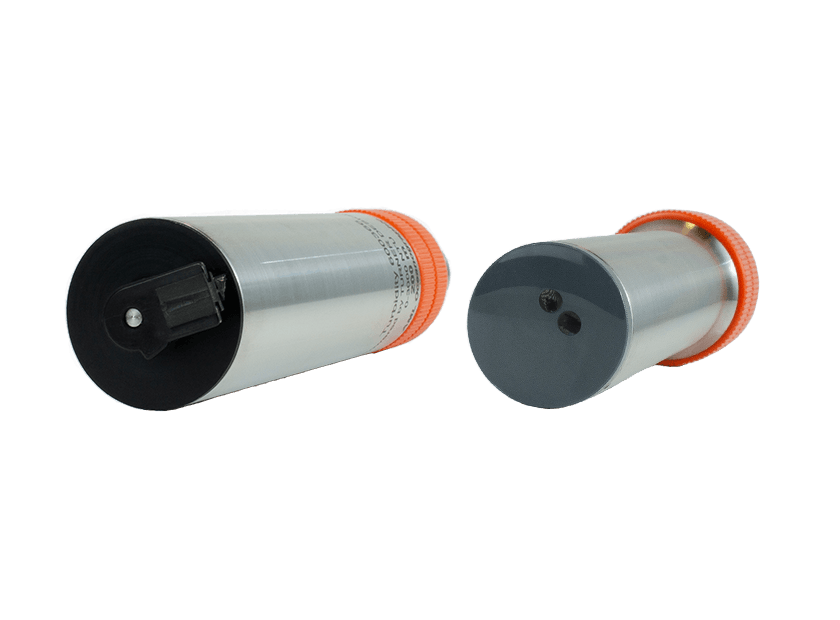Turbidity Calibration
Nephelometric Sensors, Backscatter Sensors, and Transmissometers
Suspended particulate matter in oceans, lakes and rivers scatters and absorbs sunlight, causing those water bodies to appear cloudy or turbid. Turbidity is measured by use of a turbidimeter, which is comprised of a light emitter (an LED or LASER diode) and a light detector (a photodiode). The relative angular position between emitter and detector is a useful way to distinguish between different sensor designs.
Nephelometric sensors position the near infrared emitter and the detector at 90 degrees to each other. This technique is capable of resolving changes in turbidity from glacier-fed streams to the plumes of sediment generated during dredging operations, and is typically discussed in terms of nephelometric turbidity units, or NTU. Nephelometric sensors can measure as low as 0.1 NTU and as high as 3000 NTU. As a point of reference, drinking water utilities will often attempt to keep supplies to 0.3 NTU or lower, while turbidities of 3000 NTU would be completely opaque, similar to dairy milk. AML’s Turbidity X2change™ is a nephelometric sensor, compliant with the ISO 7027 standard, and calibrated with AMCO Clear, an EPA-certified primary standard.
Backscatter sensors position the NIR emitter and the detector adjacent to one another, facing the same direction. They typically measure light that returns to the detector by 0-45 degrees (135-180 degrees from the transmitted light). This gives the benefit of measuring turbidity values greater than 3000 NTU. The disadvantage of this optical arrangement is that it has poor sensitivity at very low turbidity levels.
The two sensors discussed above are true turbidimeters, while transmissometers were designed with a different purpose. Transmissometers position emitter and detector at 180 degrees (facing each other), separated by 10 to 25 cm apart. The emitter does not use NIR, but visible light, such as 660nm. This is because transmissometers are primarily used by oceanographers and limnologists to determine the depth of penetration of visible light through the water column. Transmissometers therefore do not output turbidity units, but an attenuation coefficient, and would only be practical over a low range of turbidity that depends on their emitter-detector separation distance.
[1] International Organization for Standardization (ISO), Water Quality – Determination of Turbidity, ISO 7027, ISO, Geneva, 1993. 10 pages.
Turbidity Sensor Specifications


AML’s Turbidity X2change™ 0-1500 NTU sensor can switch between three gain settings. Turbidity X2change™ accuracy is quoted as a percentage of reading. A sensor measuring 900 NTU is accurate to +/-18 NTU, while measuring 500 NTU it is accurate to +/- 10 NTU, based on its +/- 2% specification. As the measurement nears 0 NTU the accuracy specification also includes a floor. For example, the same sensor measuring at or below 10 NTU would have an error of +/- 0.2 NTU.











